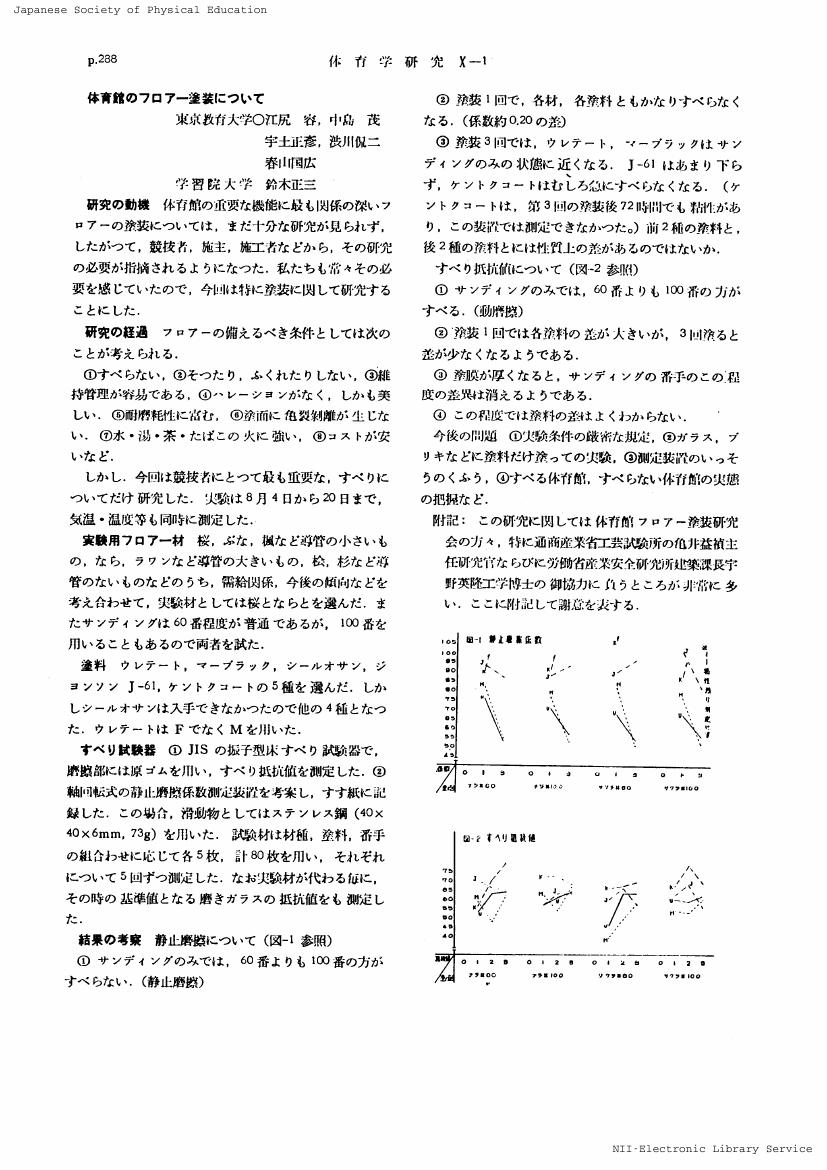2 0 0 0 OA 体育館のフロアー塗装について
- 著者
- 江尻 容 中島 茂 宇土 正彦 渋川 侃二 春山 国広 鈴木 正三
- 出版者
- 一般社団法人 日本体育・スポーツ・健康学会
- 雑誌
- 体育学研究 (ISSN:04846710)
- 巻号頁・発行日
- vol.10, no.1, pp.288, 1965-06-10 (Released:2016-12-31)
1 0 0 0 OA 空中における身体の腕-捻りに関する研究
- 著者
- 湯 海鵬 阿江 通良 横井 孝志 渋川 侃二
- 出版者
- バイオメカニズム学会
- 雑誌
- バイオメカニズム (ISSN:13487116)
- 巻号頁・発行日
- vol.10, pp.107-118, 1990-09-10 (Released:2016-12-05)
Twisting from a somersault is one of the most used techniques in sports with airborne components such as diving, gymnastics, and so on. The purposes of this study were to investigate the effect of arm swing on the production of aerial twist during somersault and to identify factors affecting the production of the twist. By using a model composed of three rigid bodies, the mechanism of the production of twist from a somersault was confirmed theoretically. Then, quantitative calculation was done based on the model. In the calculation a performer was assumed to swing one arm downward from the symmetrical position with both arms above the head. To validate the model, twisting somersaults of two male skilled gymnasts were filmed and analyzed with 3-dimensional cinematography (DLT method) to compare with the model. The performances were forward twist-somersaults of 1/2, 1 and 3/2 revolutions from a vaulting horse. The factors affecting the generation of twist are discussed based on the results of computer simulation and film data. The results are summarized as follows: 1) An asymmetrical arm swing could generate a twist about the longitudinal axis of the body from a somersault. This arm swing tilted the principal axes of the body away from their original positions. The axis of the angular momentum that was initially established did not change in the airborne phase, but the momentum resolved into two perpendicular components, one about the body's principal longitudinal axis and the another about the body's frontal axis (principal axis). Thus, the somersaulting motion around the frontal axis will continue even though the frontal axis is now tilted from its original position, and in addition the body will begin to twist about its longitudinal axis. 2) The direction of the twist depended upon the initial directions of the somersault and/or arm swing. 3) Large angular velocity of the somersault before the change in the posture and large swing angle of the arm were effective for the generation of twisting. The smaller the moment of inertia about body's longitudinal axis, the larger the twisting that was produced.
1 0 0 0 二輪自動車の安定性・操縦性の実験的研究
- 著者
- 近藤 政市 広瀬 藤五郎 渋川 侃二
- 出版者
- 一般社団法人日本機械学会
- 雑誌
- 日本機械学會誌 (ISSN:00214728)
- 巻号頁・発行日
- vol.58, no.442, pp.827-833, 1955-11-05
- 被引用文献数
- 1
